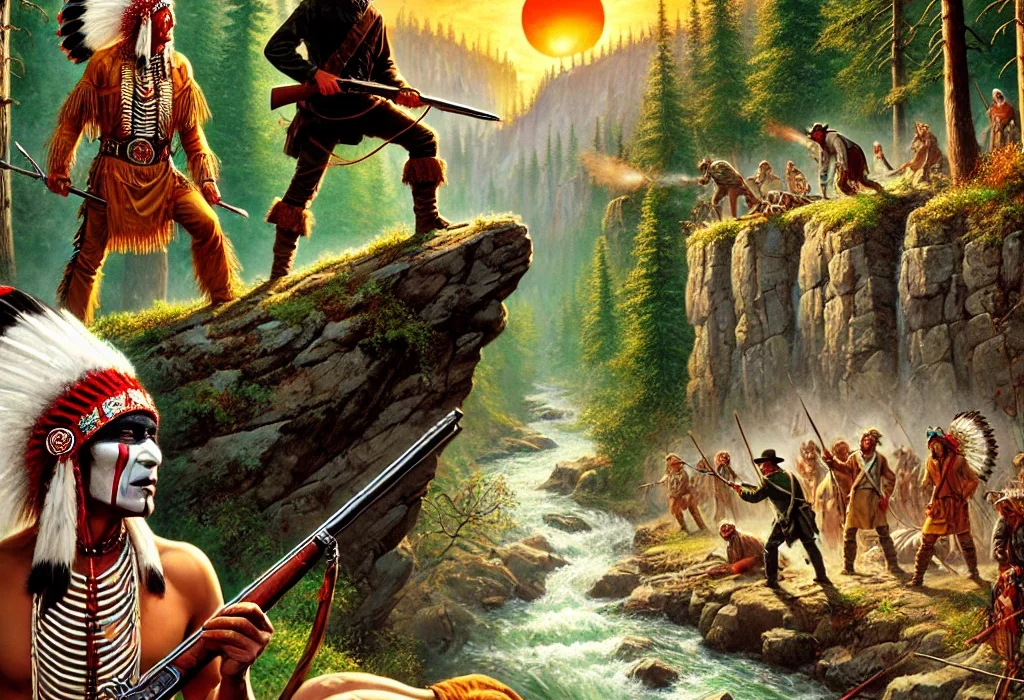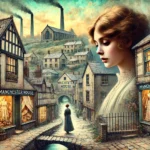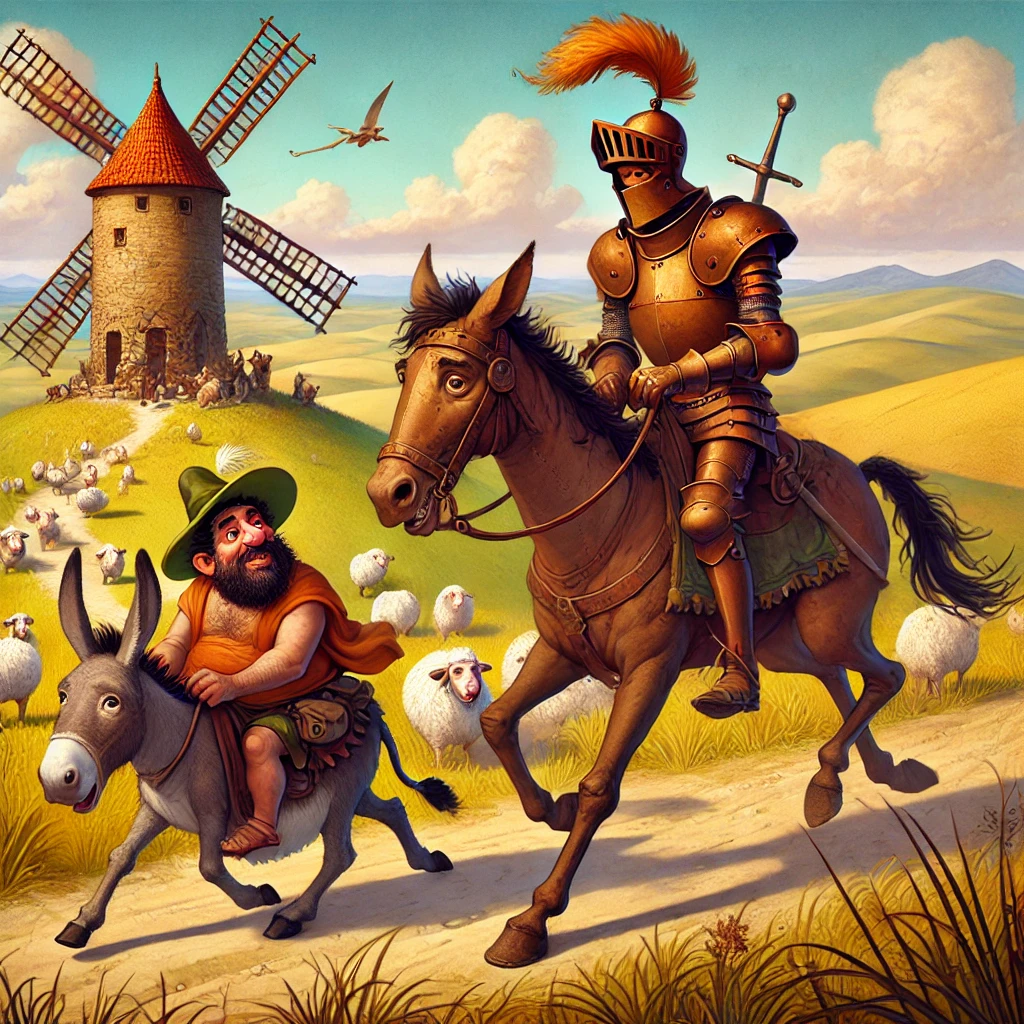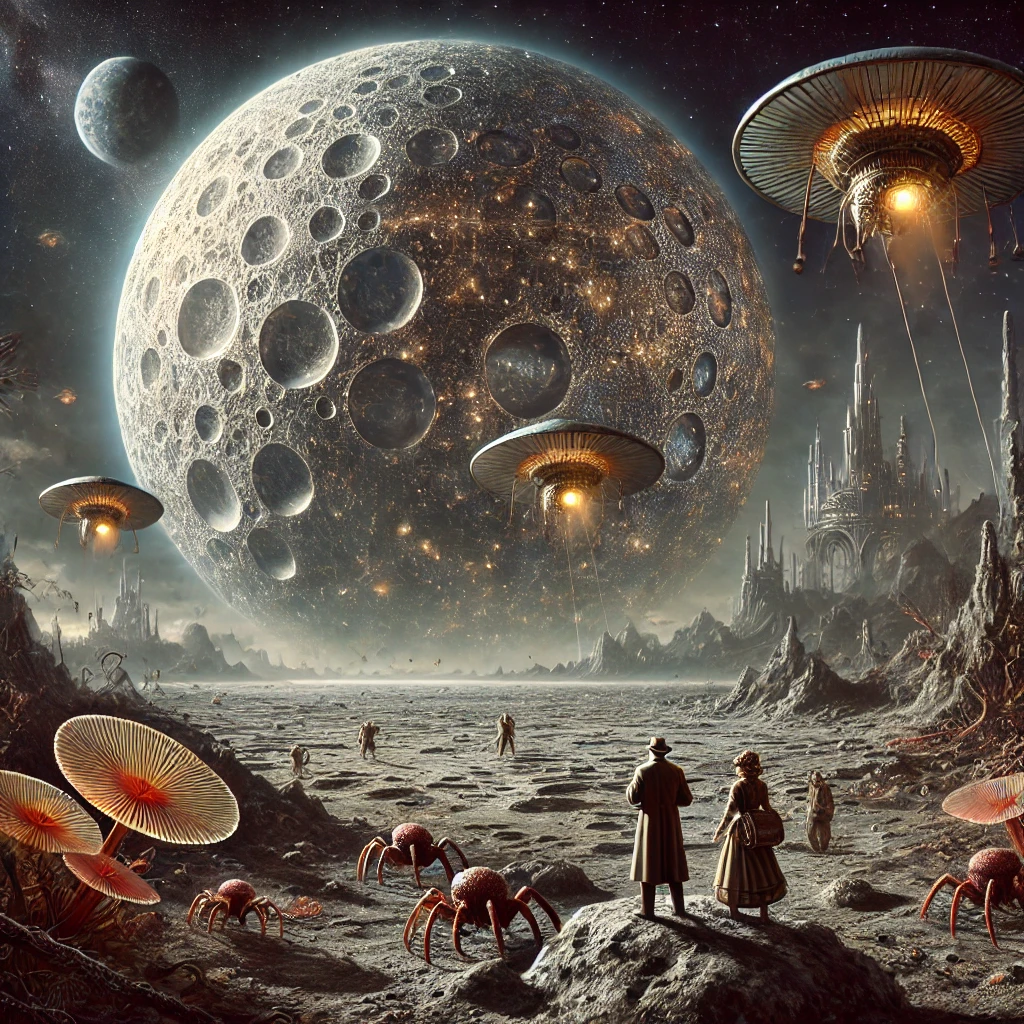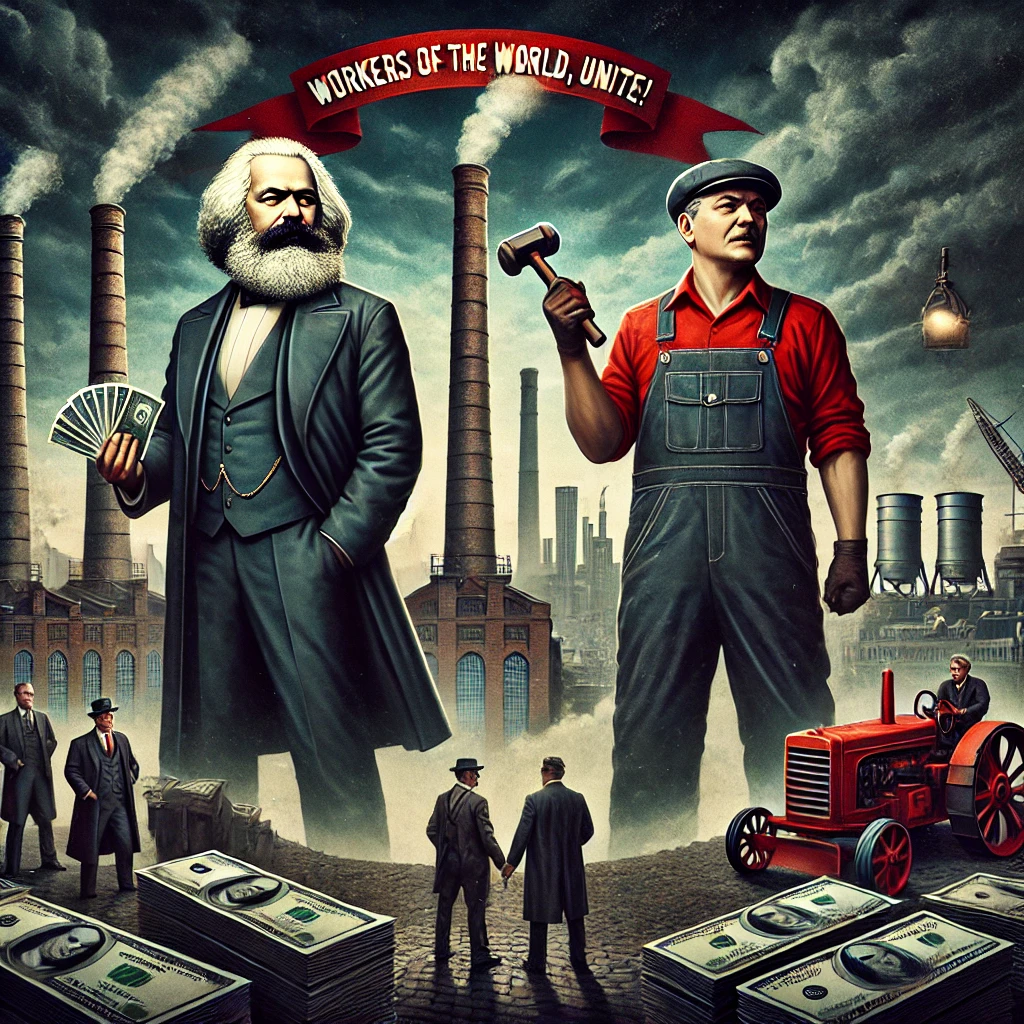The Last of the Mohicans by James Fenimore Cooper, first published in 1826, is a historical novel set during the French and Indian War (1754–1763), a part of the larger Seven Years’ War. It is the second book in Cooper’s “Leatherstocking Tales” series and is widely regarded as his masterpiece. The novel explores the complex relationships between Native American tribes, European settlers, and colonial powers. The central storyline follows the rescue of two sisters, Cora and Alice Munro, daughters of a British colonel, who are captured by a Huron tribe allied with the French.
Plot Summary
The year was 1757, and the French and Indian War had engulfed the American wilderness. A conflict between the British and French forces, it extended deep into the colonies, drawing the native tribes into its bloody grasp. Among the many dangers lurking in the woods, few were more treacherous than the wilderness itself, and yet, deeper into the forest journeyed two young women, Cora and Alice Munro, daughters of Colonel Munro, a British officer. Along with them rode Major Duncan Heyward, tasked with their safe passage to Fort William Henry, where their father waited. But the path through this untamed land was fraught with peril.
Accompanying them was an Indian guide, Magua, a Huron chief with his own hidden agenda. Unbeknownst to Heyward and the women, Magua harbored a deep resentment against Colonel Munro, who had once whipped him and left him to face the shame of exile from his tribe. Fueled by this burning grudge, Magua plotted to betray them to his Huron allies.
As they traversed the dense, oppressive wilderness, their journey took an ominous turn. Suspicion crept into Heyward’s mind, but before he could act, salvation appeared in an unlikely form. Hawkeye, a white scout who had made the forests his home, emerged from the shadows, accompanied by two Mohicans—Chingachgook and his son, Uncas, the last of their noble tribe. Warned of Magua’s deceit, the group fled into the forest, but the cunning Huron chief was not easily deterred. He and his warriors pursued them relentlessly.
Taking refuge in a cave beneath a waterfall, the travelers found themselves trapped when Magua and his men discovered their hiding place. A desperate battle followed, but outnumbered and overpowered, they were captured. It was here that Magua revealed his true intentions. He offered Cora a choice: become his wife, or face the deaths of all her companions. Proud and defiant, Cora refused him, her boldness stoking the flames of Magua’s hatred.
Fate, however, had other plans for the captives. Hawkeye and the Mohicans escaped and later returned to rescue their friends, leading to a daring chase through the wilderness. For days they moved through forests, across rivers, and over mountains, trying to stay ahead of the Huron war party. Along the way, Hawkeye and Uncas proved their unmatched prowess as trackers and warriors, leading the group with determination and skill.
As they neared Fort William Henry, they arrived just in time to witness the fort under siege by the French forces, led by General Montcalm. Inside, Colonel Munro’s men held out bravely, but their situation grew increasingly desperate. Magua, ever cunning, continued to maneuver in the shadows, waiting for his moment to strike again. When the fort finally fell, Montcalm allowed the British to surrender with honor, but the victory was tainted by what followed. As the British troops and civilians evacuated the fort, Magua, enraged by the loss of his vengeance, incited his Huron warriors to attack. A massacre ensued.
In the chaos, Magua recaptured Cora, and this time Alice as well, taking them deep into the wilderness to his village. With his captives secure, he believed his revenge was complete. Yet Hawkeye, Uncas, and Chingachgook, joined now by Heyward and the remaining British soldiers, pursued Magua with grim resolve.
The journey to rescue the sisters led the group into enemy territory, where danger waited at every turn. Along the way, Heyward, disguised as a French doctor, infiltrated the Huron camp with Hawkeye’s help. While attempting to free Alice, they encountered a French ally sympathetic to their cause, who aided them in their plans. But Magua’s grip on Cora was tighter. She had become the symbol of his vengeance, and he would not let her go so easily.
Uncas, whose silent admiration for Cora had grown into something deeper, pursued Magua with a fierce and determined heart. His bravery, however, led him into the heart of danger. In a final confrontation, Magua took Cora to a remote cliff where Uncas and the Mohicans followed closely behind. In the ensuing fight, Uncas fell, struck down by Magua’s hand as he fought to save the woman he loved. Cora, too, met a tragic fate, dying alongside him, a victim of the relentless war and the hatred that had driven Magua.
With his son slain, Chingachgook, now truly the last of the Mohicans, mourned not just for Uncas, but for the end of his people’s line. Hawkeye, his closest companion, shared in his grief, knowing that Uncas’ death symbolized more than just the loss of a warrior. It marked the passing of a noble tribe, a vanishing way of life.
In the final moments of the tale, the remaining survivors buried their dead, their hearts heavy with sorrow. Magua, the villain whose thirst for revenge had driven much of the tragedy, met his own end, plummeting from the cliffs as justice claimed him at last. Alice was rescued and returned to her father, but the joy of her salvation was overshadowed by the losses they had suffered.
In the depths of the forest, Chingachgook stood alone. His son was gone, his people nearly extinct, and the land that had once been his home was being claimed by others. The wilderness, which had witnessed so much bloodshed, stood silent once more, but it was a silence filled with the echoes of the past. The spirit of Uncas, the last of the Mohicans, lingered in the trees, the rivers, and the mountains, a reminder of a world that was rapidly disappearing, swallowed by the tide of progress and civilization.
In the end, though the war between nations continued, for those who had lived and fought in the forest, the most important battles had been fought, and lost, in the heart.
Main Characters
Hawkeye (Natty Bumppo): The central figure of the “Leatherstocking Tales,” Hawkeye is a seasoned frontiersman who straddles the line between Native American and colonial cultures. Skilled with a rifle and possessing a deep knowledge of the wilderness, he embodies rugged individualism and acts as a guide and protector for the main characters. His moral compass is unwavering, and he stands as a symbol of American frontier idealism.
Chingachgook: A Mohican chief and the last of his tribe, Chingachgook is Hawkeye’s closest companion. He represents the noble, tragic figure of the disappearing Native American culture. His bond with Hawkeye is one of deep trust and mutual respect. His main emotional drive is the survival of his son, Uncas, and the continuation of their lineage.
Uncas: Chingachgook’s son, Uncas is the last heir to the Mohican tribe and one of the most noble and honorable characters in the novel. Brave and loyal, he develops a romantic interest in Cora Munro. His tragic fate mirrors the larger theme of the extinction of Native American tribes.
Cora Munro: The elder daughter of Colonel Munro, Cora is courageous, strong-willed, and passionate. Her mixed heritage (her mother was part African) plays a crucial role in the story, particularly in the context of her romantic relationship with Uncas and the racism she faces.
Alice Munro: Cora’s younger sister, Alice is portrayed as delicate, fair-skinned, and more conventional in her behavior. She contrasts with Cora’s fiery temperament and takes a more passive role in the narrative.
Magua (Le Renard Subtil): The primary antagonist, Magua is a Huron chief who seeks revenge against Colonel Munro for past grievances. Complex and cunning, he oscillates between seeking revenge and personal redemption. His villainous actions drive much of the conflict, particularly through his kidnapping of Cora and Alice.
Theme
Cultural Conflict and Identity: The novel is set against the backdrop of intense cultural conflict between Native Americans, the French, and the British. Cooper explores the ways these groups clash over land, resources, and survival. Hawkeye, who lives between two worlds, serves as a bridge between Native American and European cultures, highlighting the tensions and synergies between them.
The Noble Savage: Cooper presents a romanticized view of Native Americans, especially through the characters of Uncas and Chingachgook. The “noble savage” motif is seen in their deep connection to nature and their moral integrity, yet it also underscores the tragic disappearance of Native American culture in the face of European expansion.
Race and Miscegenation: Race plays a critical role in the relationships and tensions in the novel. Cora’s mixed racial background is a significant plot point, affecting her relationship with Uncas and how others perceive her. The novel reflects the anxieties of its time regarding race and interracial relations.
Nature as a Character: The wilderness is not just a backdrop but an active force in the novel, influencing the characters’ fates and actions. Cooper’s rich descriptions of the American frontier reinforce the themes of survival, freedom, and the encroachment of civilization on nature.
Heroism and Sacrifice: Acts of heroism, particularly by Hawkeye, Uncas, and Chingachgook, permeate the novel. Their bravery, often in the face of overwhelming odds, is a testament to the spirit of sacrifice, particularly in defense of others or in adherence to one’s moral code.
Writing Style and Tone
James Fenimore Cooper’s writing style in The Last of the Mohicans is elaborate and descriptive, particularly in his portrayal of the natural landscape. The American wilderness is a central part of the novel, and Cooper takes great care in rendering the forests, rivers, and mountains with vivid, almost poetic detail. This immersive style allows readers to experience the setting almost as another character, one that interacts with and challenges the human characters. His language is formal and reflective of 19th-century literary norms, often utilizing long sentences and intricate descriptions to convey the gravity of events and the nobility of his characters.
The tone of the novel is one of adventure and tragedy. There is a melancholic undercurrent, particularly in Cooper’s portrayal of the Native American characters and their inevitable decline. The romanticization of the wilderness and Native American culture creates a sense of loss and nostalgia, especially as these elements are juxtaposed against the encroaching forces of civilization and colonialism. At the same time, there is an air of tension and suspense, driven by the war between the French and the British and the personal vendettas of characters like Magua. Cooper skillfully balances moments of action and introspection, blending the excitement of a frontier adventure with deep thematic explorations of race, identity, and survival.
We hope this summary has sparked your interest and would appreciate you following Celsius 233 on social media:
There’s a treasure trove of other fascinating book summaries waiting for you. Check out our collection of stories that inspire, thrill, and provoke thought, just like this one by checking out the Book Shelf or the Library
Remember, while our summaries capture the essence, they can never replace the full experience of reading the book. If this summary intrigued you, consider diving into the complete story – buy the book and immerse yourself in the author’s original work.
If you want to request a book summary, click here.
When Saurabh is not working/watching football/reading books/traveling, you can reach him via Twitter/X, LinkedIn, or Threads
Restart reading!


